5 Pieces of Furniture Designed by Zaha Hadid

Furniture by Zaha Hadid represents contemporary design and sculptural pieces rather than just furniture. The Iraqi-born architect won the Pritzker Prize in 2004 and became one of the most important architects worldwide. His designs characterize the exploration of deconstructivism and a mix of innovation and dynamism.
The forces of nature exist in Zaha Hadid’s work. His furniture is mainly of fiberglass or injected plastic and these materials allow the creation of unimaginable shapes that sometimes defy gravity.
His studio, Zaha Hadid Architects, remains at the forefront of design. This architect experiments and uses the latest technology to create memorable and rare designs.
Zaha Hadid not only projected buildings. He showcased his creativity and talent in all the applied arts such as furniture design, jewelry, homeware, and faucets. His designs always reflect his unmistakable personal brand – a dizzying, daring, elegant, and challenging combination.
1. The Z chair
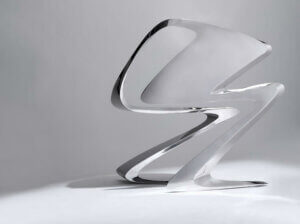
The Z chair represents the essence of contemporary design and research developed by the Zaha Hadid studio. This chair is the result of bringing a simple gesture to three-dimensionality. The chair folds in space which demonstrates the constant dialogue between form and function.
As a constant in Zaha Hadid’s work, geometric abstraction occupies an important place in its design and creates a winding shape. This shape alternates between thin and wide surfaces, which give it ergonomic qualities and stability.
This chair also stands out for the subtle play of contrasts between angular corners and smooth, long curves. It reflects Zaha Hadid’s two-dimensional pictorial works.
More than a style, my thing is to always try to be on the frontier of innovation.
-Zaha Hadid-
2. The Belu bench
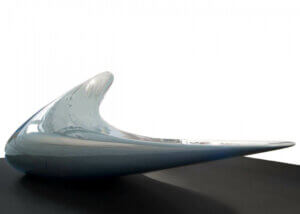
The Belu bench is a piece of furniture with multi-functional qualities. It can be a table, counter, chair, container, or supporting surface and it consists of complex and dynamic geometry with a fluid shape.
The bench has a relationship with the human body, depending on its use. Therefore, it’s not only a sculptural piece but a material form that defines the adjacent spaces and their relationship with people. In Zaha Hadid’s words, “the Belu bench defies simplicity”.
3. The Kuki chair
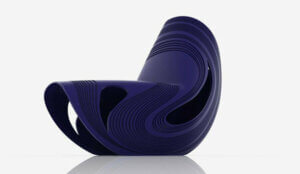
The Kuki chair is perhaps the only chair by Zaha Hadid that can be found in industrial production. Its design is based on a symmetrical game and a series of open incisions in the shape of a drop give the design a feeling of lightness.
The chair is of plastic and shaped like a circular sheet with a low-relief print. The plastic sheet is folded in half along the axis by applying thermal deformation and then folded in half in the opposite direction.
4. Mesa table
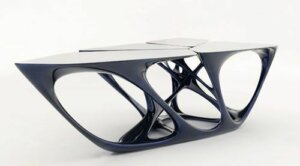
The Mesa table was designed for the work of Vitra by Zaha Hadid. The structure represents a world between two horizontal planes, a world that becomes the sustenance of the table.
With a series of perforations, the table strikes a balance between these and the solid parts. The perforations follow a certain order that helps define the concept and the surface of the table. The shapes that Zaha Hadid tried to capture in this design are similar to those of water lilies that grow in a pond.
5. The Liquid Glacial table
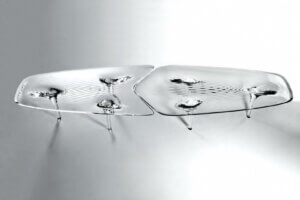
The Liquid Glacial table is part of an artistic project carried out with Plexiglas. Designed in 2012, this table was exhibited at the David Gill Gallery in London. The table design gives the feeling that part of it is liquid because of its unique design.
It represents the fall of a transparent liquid onto a surface. The liquid has frozen in time and creates the volume of the table which is completely transparent. Therefore, it looks like glacial ice.
The table exists in various sizes, is delicate yet robust and it comes as small as a coffee table or a large dining table.
Zaha Hadid’s furniture is unique but difficult to find. However, if you’re are a fan of his designs, you can discover some alternatives. You can find small decorative elements, such as centerpieces or vases signed by the Iraqi architect if you search hard enough.
So, what do you think of this designer’s work?








